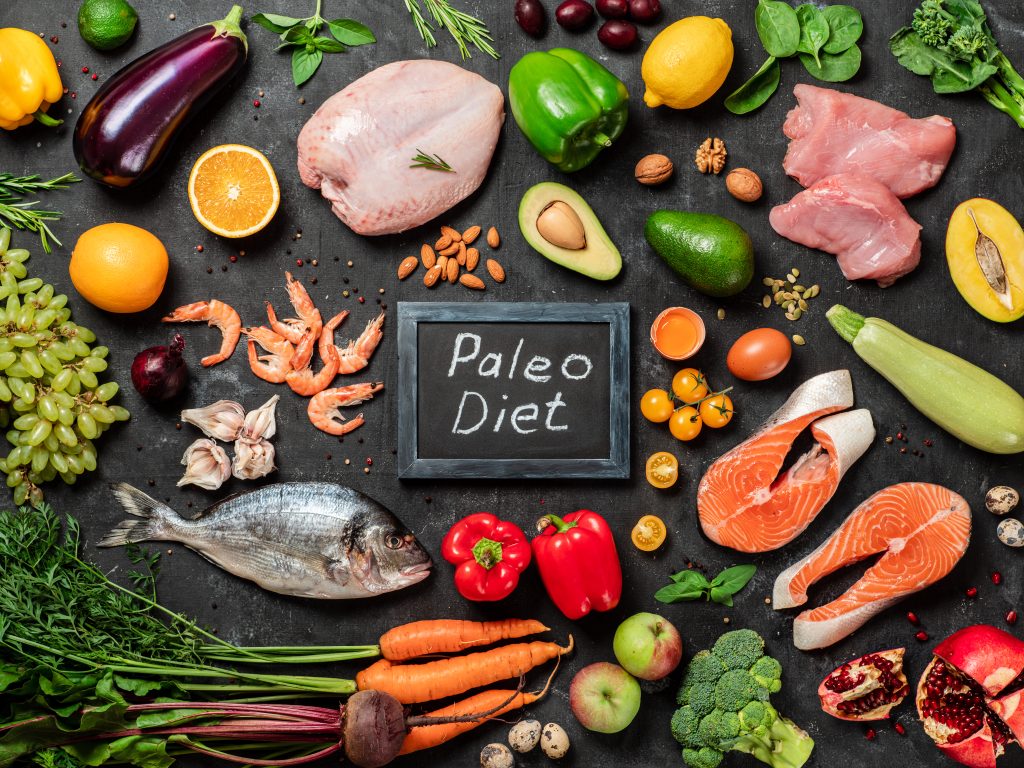The Paleo Diet: What it Is and How it Works
11 min read
If you’re looking for a healthy eating plan that harks back to our Paleolithic ancestors, look no further than the Paleo Diet. This popular diet has been gaining steam in recent years, as more and more people seek to improve their health and well-being through natural, unprocessed foods.
In this article, we’ll be taking a closer look at the basics of the Paleo Diet, what it consists of, and how it works. We’ll also explore the health benefits of the diet, such as improved cardiovascular health and blood sugar control, as well as the challenges that one may face in adopting this way of eating. So, let’s dive in and see what the Paleo Diet is all about!
What is the Paleo Diet?
The Paleo diet, also known as the Paleolithic diet or the hunter-gatherer diet, is based on the idea of eating in a way that is similar to the diets of our Paleolithic ancestors. The premise of the diet is to consume whole, unprocessed foods that were readily available to our ancestors during the Paleolithic era. This means eliminating processed foods, grains, and refined sugars and emphasizing foods like lean protein, fresh fruits and vegetables, and healthy fats.
The Paleo diet has become a popular choice for those looking to improve their health and lose weight. The diet is believed to be beneficial for a variety of health conditions, including cardiovascular disease, insulin sensitivity, and blood sugar control. The focus on unprocessed foods and lean proteins means that the Paleo diet is often low in unhealthy fats and high in essential nutrients like protein, fiber, and healthy fats. Overall, the Paleo diet is a healthy eating plan that emphasizes a variety of whole, unprocessed foods.
Why Consider a Paleo Diet?
A paleo diet is a way of eating that focuses on consuming whole, unprocessed foods that our paleolithic ancestors would have eaten. People who are interested in consuming more whole foods or finding relief from chronic health conditions may find the paleo diet appealing. In addition to its potential benefits for overall health, the paleo diet also provides a wide variety of foods that can help individuals maintain a balanced diet.
The paleo diet encourages the consumption of lean meats, fresh fruits, and vegetables, which are high in essential nutrients and low in added sugars and artificial sweeteners. By eliminating refined sugars and reducing dairy and starchy vegetables, the paleo diet focuses on foods that are minimally processed and rich in nutrients. This approach to eating aligns with the way humans ate during the paleolithic era, which researchers note can help reduce the risk of chronic diseases. Overall, the paleo diet provides a simple and effective way to improve health through a variety of whole, unprocessed foods.
Benefits of the Paleo Diet
The benefits of the paleo diet are numerous and can have a significant impact on an individual’s health. By eliminating processed foods and increasing whole, unprocessed foods, the paleo diet can potentially improve blood sugar control, reduce the risk of cardiovascular disease, and aid in weight loss.
Weight Loss
The Paleo diet has been applauded for its potential in promoting successful weight loss. By reducing the intake of refined sugars and processed foods while increasing the consumption of fresh fruits, vegetables, and lean proteins, the diet can help reduce overall calorie intake while providing essential nutrients. Additionally, removing processed foods can help regulate hormones and improve insulin sensitivity, leading to weight loss and a reduction in waist circumference.
One of the benefits of the Paleo Diet is its focus on high-quality, unprocessed foods. This means that individuals can indulge in healthy fats, such as grass-fed butter and macadamia nuts, which are low in calories but high in essential nutrients. Another example is pumpkin seeds, which offer a good source of protein, fiber, and healthy fats, making them an ideal addition to any weight loss plan.
For those who are looking to lose weight on the Paleo Diet, it is also recommended to reduce the intake of starchy vegetables such as potatoes and increase the consumption of high-quality lean meats like grass-fed beef. Lean proteins can help promote feelings of fullness while also providing essential nutrients and amino acids necessary for building and repairing muscle.
Reduced Risk of Chronic Disease
The Paleo diet has been applauded for its ability to reduce the risk of chronic diseases. The diet emphasizes consuming unprocessed, nutrient-rich whole foods while avoiding refined sugar and processed foods that often contain harmful additives such as trans-fats, high fructose corn syrup, and artificial sweeteners. By sticking to this way of eating, individuals can improve their overall health and wellbeing.
Adopting a Paleo diet can significantly reduce the risk of chronic diseases such as cardiovascular disease, high blood pressure, and diabetes. This way of eating is known to improve key health markers such as blood sugar levels, insulin sensitivity, and waist circumference, and has been shown to have a protective effect on the heart. The regular consumption of grass-fed meat, wild game, lean protein, fresh fruits, and starchy vegetables can directly impact cardiovascular health and blood sugar control. By choosing Paleo-approved foods, individuals can effectively safeguard their health and reduce their risk of chronic diseases.
Improved Heart Health
The Paleo Diet has gained popularity as a healthy eating plan due to its potential benefits for heart health. It is a diet rich in fresh fruits, vegetables, lean protein, and healthy fats that can improve health markers associated with cardiovascular disease. Clinical studies have suggested that following the Paleo Diet can help in reducing the risk factors associated with heart disease, such as high blood pressure, inflammation, and insulin sensitivity.
A key aspect of the Paleo Diet that makes it effective for heart health is its emphasis on consuming lean meats as a primary source of protein. Examples of paleo-approved foods such as grass-fed meat, wild game, and pumpkin seeds are rich in omega-3 fatty acids, which have been linked to a lowered risk of heart disease. By incorporating these foods into the diet, the heart benefits from reduced inflammation and increased blood sugar control, leading to a lowered risk of cardiovascular disease.
Moreover, the avoidance of refined sugars, processed foods, and artificial sweeteners can help in reducing the risk of heart disease. Such as refined sugars and processed foods have been linked to increased inflammation and high blood pressure, which can put a strain on the heart and increase the risk of developing cardiovascular disease.
Blood Sugar Control
The Paleo Diet has been shown to be effective in controlling blood sugar levels and improving insulin sensitivity. This is due in part to the emphasis the diet places on unprocessed, whole foods that have a lower glycemic index. The glycemic index is a measure of how quickly foods raise blood sugar levels. Foods with a high glycemic index cause a rapid increase in blood sugar, while foods with a low glycemic index cause a slower, more gradual increase. By including more of these low glycemic index foods in the diet, individuals can better control their blood sugar levels.
Foods that are included in the Paleo Diet that have a low glycemic index include fresh fruits, vegetables, lean protein, nuts, and seeds. These types of foods also provide essential nutrients and fiber which further aid in blood sugar control. Studies have shown that adherence to a Paleo Diet can lead to improved glycemic control and insulin sensitivity, which is especially beneficial for individuals with diabetes or those at risk for developing the condition.
Consuming foods high in refined sugar, on the other hand, can have negative effects on blood sugar control and overall health. Refined sugar is quickly absorbed into the bloodstream causing a sharp rise in blood sugar levels. Replacing these foods with natural sources of sugar, such as fresh fruits and vegetables in the Paleo Diet can improve blood sugar control and provide additional health benefits, such as increased fiber intake and reduced inflammation.
Nutrient Rich Foods
The paleo diet emphasizes the consumption of nutrient-dense foods, which provide a wealth of essential vitamins and minerals. This approach encourages individuals to consume fresh fruits and vegetables, high-quality protein, and healthy fats. Fresh fruits and vegetables are rich in antioxidants, fiber, and a range of vitamins including A, C, and K. These nutrients help to reduce inflammation throughout the body and support overall health and well-being.
Protein sources on the paleo diet should also be nutrient-rich, with grass-fed meat and wild game being particularly encouraged. Lean poultry and eggs are also excellent sources of high-quality protein that provide essential amino acids. These foods are essential for building and repairing tissues in the body, supporting the growth of muscle and bone, and aiding in immune system function. The paleo diet encourages a balanced intake of protein, carbohydrates, and healthy fats to support optimal health and vitality.
Potential Drawbacks of the Paleo Diet
While the paleo diet has gained immense popularity in recent years, it also has its potential drawbacks. Understanding these drawbacks is essential to make an informed decision about whether to follow this diet or not.
Expense and Availability of Ingredients
Following a paleo diet can present challenges when it comes to the expense and availability of ingredients. Unprocessed and lean protein sources like grass-fed meat and wild game can be expensive compared to modern diets. The exclusion of dairy products, grains, and refined foods can also make meal planning more costly and require additional preparation. Additionally, these paleo-approved ingredients may not be readily available in some areas, further increasing the difficulty of adhering to the diet.
However, there are ways to make the paleo diet more affordable and accessible. Buying in bulk can help save money on protein sources like grass-fed meat and wild-caught fish. Shopping sales can also help reduce the cost of produce and other ingredients. Seeking out local farmers markets can be a great way to find fresh and affordable fruits and vegetables while supporting local businesses.
Another approach to make the paleo diet less expensive is to explore cost-effective substitutes for some of the pricier ingredients. For example, instead of grass-fed butter, try coconut oil or olive oil. Peanut butter is another great source of protein and fat that can substitute for more expensive nut butters like macadamia nut butter. Meal prepping for the week can also help reduce costs by ensuring that ingredients are used efficiently, reducing waste and saving time. By utilizing these strategies, the cost and availability of ingredients can be managed, making the paleo diet a more feasible and sustainable option.
Lack of Flexibility and Variety
The paleo diet’s strict guidelines on what foods to eat can make it challenging for some individuals to maintain a varied and flexible meal plan. The diet’s restrictions on dairy products, refined sugar, artificial sweeteners, and starchy vegetables can limit options and make it difficult to include a variety of ingredients in meals.
However, there are alternatives to these restricted foods that can provide a range of nutrients and flavor. Opting for grass-fed meat and lean proteins, including fresh fruits and vegetables, can offer a variety of textures and flavors. To create a more varied meal plan, individuals can explore new recipes online, try different herbs and spices, and incorporate different sources of protein such as wild game and pumpkin seeds.
It is essential to remember that creating a meal plan that is balanced and nutrient-rich within the restrictions of the paleo diet while maintaining variety can be challenging. Therefore, it may be beneficial to incorporate meals that don’t strictly adhere to the guidelines of the diet. In doing so, individuals can enjoy a broader range of foods and still receive the benefits of a healthy eating plan.
Difficulty Following Strict Guidelines
Following a strict diet like Paleo can be difficult for some individuals. It’s important to acknowledge that it requires a certain level of effort and commitment. However, there are some strategies that can help individuals who are finding it challenging to adhere to the strict guidelines of the Paleo diet.
One such strategy is to gradually incorporate Paleo-approved foods into one’s diet. For example, start by cutting out refined foods and replacing them with fresh fruits and vegetables. Over time, start to incorporate lean proteins like grass-fed meat and unprocessed foods into your daily meals. This can help make the transition to a Paleo diet less overwhelming and more manageable.
Allowing for occasional indulgences is also important. It’s okay to indulge in your favorite foods once in a while, especially if it helps you stay on track with your overall dietary goals. However, it’s important to make sure that these indulgences are still Paleo-approved. For example, instead of reaching for ice cream, opt for macadamia nuts or a piece of fruit.
Finally, focusing on nutrient-dense options is crucial for a successful Paleo diet. Choose foods that are rich in essential nutrients like vitamins, minerals, and antioxidants. This can help ensure that your body is getting all of the nutrients it needs to function properly and can prevent nutrient deficiencies.
Emphasizing the long-term health benefits of a Paleo diet and finding a strong support system can also help individuals stick to the guidelines. The Paleo diet has been shown to have potential benefits for weight loss, blood pressure, and other health markers. Additionally, having a supportive network of family, friends, or a community of like-minded individuals can provide encouragement and motivation when it comes to sticking to a Paleo diet.
Nutrient Deficiencies
Following a Paleo diet can have potential nutrient deficiencies that need to be addressed. While this diet emphasizes the consumption of nutrient-dense whole foods, avoiding food groups such as dairy and grains may result in low levels of certain nutrients. For instance, a lack of dairy products may lead to insufficient calcium and vitamin D intake, which may increase the risk of bone-related health problems. Similarly, not consuming sufficient grains may cause a shortage of fiber and iron.
Another aspect to consider related to nutrient deficiencies in the Paleo diet is relying too heavily on meat and seafood as sources of protein. Although these foods are high in protein, vitamins, and minerals, eating them excessively can cause inadequate intake of other essential nutrients like vitamin C and potassium. Therefore, it is important to ensure a well-rounded and balanced diet to avoid any potential nutrient deficiencies that may be caused by this diet. This can be achieved by consuming an ample amount of fresh vegetables and fruits, along with other sources of protein like nuts, legumes, and seeds.

Conclusion
In conclusion, following a Paleo diet can be difficult for some individuals due to its strict dietary guidelines, but there are strategies that can help make it more manageable. Allowing for occasional indulgences and focusing on nutrient-dense options are important in order to ensure that you’re getting all of the essential vitamins and minerals your body needs. However, it is important to be aware of potential nutrient deficiencies that may arise when following this diet and to find ways to address them. With the right approach, a Paleo diet can be an effective way to improve overall health and wellness.






